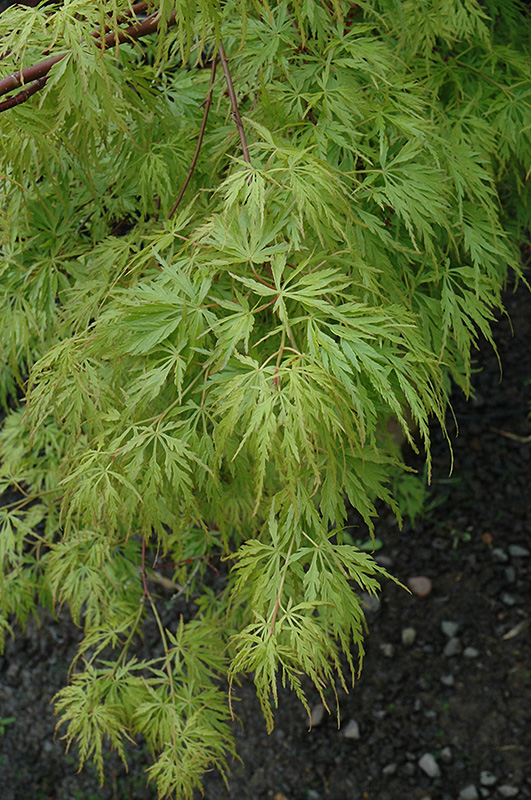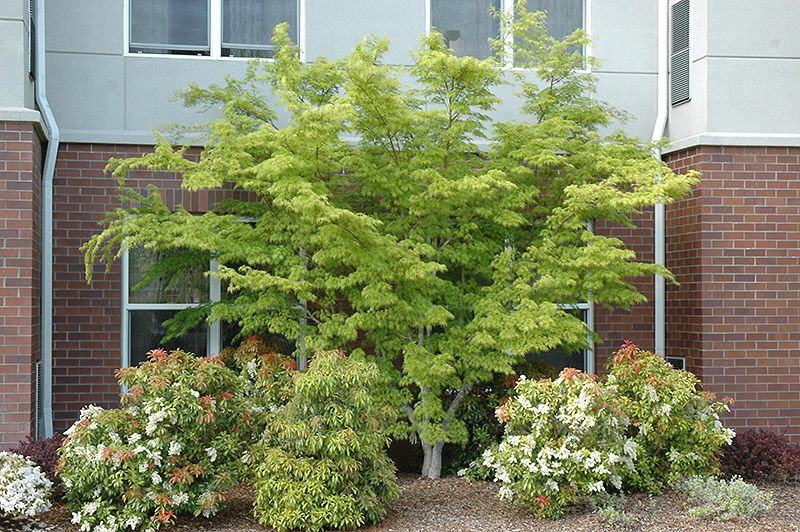Digging deeperPlant Library
Seiryu Japanese Maple
Acer palmatum 'Seiryu'
Height: 20 feet
Spread: 15 feet
Sunlight:
![]()
![]()
Hardiness Zone: 5
Group/Class: Dissectum
Description:
This wonderful tree posesses fine ferny foliage in a lovely green and turns a brilliant scarlet in fall; unusual and rare for a dissectum in that it grows in an upright form, making this a great choice for a solitary accent in the garden
Ornamental Features
Seiryu Japanese Maple is primarily valued in the landscape for its ornamental upright and spreading habit of growth. It features subtle corymbs of red flowers rising above the foliage in mid spring before the leaves. It has attractive light green deciduous foliage which emerges red in spring. The deeply cut ferny palmate leaves are highly ornamental and turn outstanding shades of gold, orange and red in the fall. The rough gray bark and red branches add an interesting dimension to the landscape.
Landscape Attributes
Seiryu Japanese Maple is a deciduous tree with an upright spreading habit of growth. It lends an extremely fine and delicate texture to the landscape composition which can make it a great accent feature on this basis alone.
This is a relatively low maintenance tree, and should only be pruned in summer after the leaves have fully developed, as it may 'bleed' sap if pruned in late winter or early spring. It has no significant negative characteristics.
Seiryu Japanese Maple is recommended for the following landscape applications;
- Accent
- Shade
- Mass Planting
Planting & Growing
Seiryu Japanese Maple will grow to be about 20 feet tall at maturity, with a spread of 15 feet. It has a low canopy with a typical clearance of 4 feet from the ground, and is suitable for planting under power lines. It grows at a slow rate, and under ideal conditions can be expected to live for 80 years or more.
This tree does best in partial shade to shade. It prefers to grow in average to moist conditions, and shouldn't be allowed to dry out. It is not particular as to soil pH, but grows best in rich soils. It is somewhat tolerant of urban pollution, and will benefit from being planted in a relatively sheltered location. Consider applying a thick mulch around the root zone in winter to protect it in exposed locations or colder microclimates. This is a selected variety of a species not originally from North America.
A NetPS Plant Finder tool
This Plant Library is for informational purposes only. We may or may not carry the items listed. During many times of the year, we may carry many more plants in our store than are listed in the Plant Library. Please contact us directly at 303-690-4722 or visit our store for current availability and for assistance.

